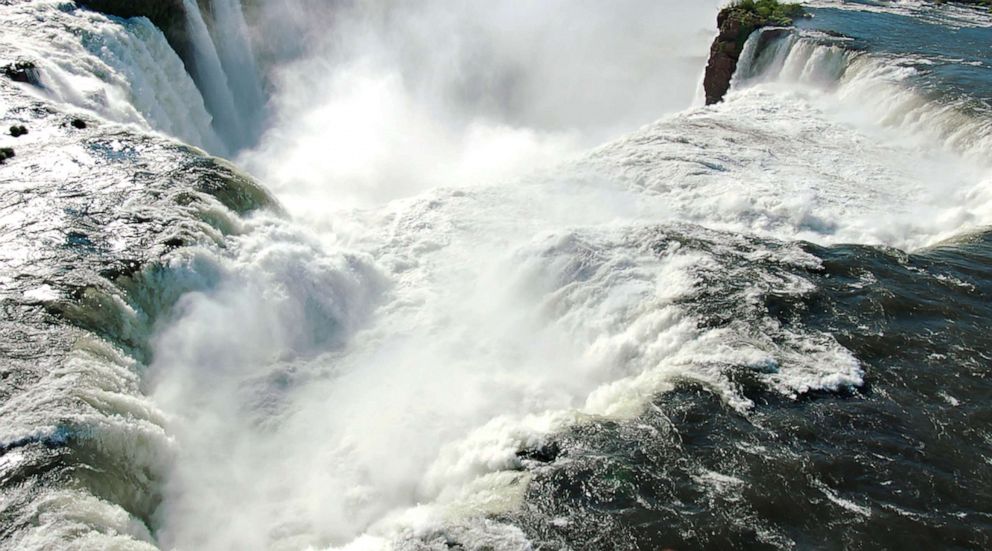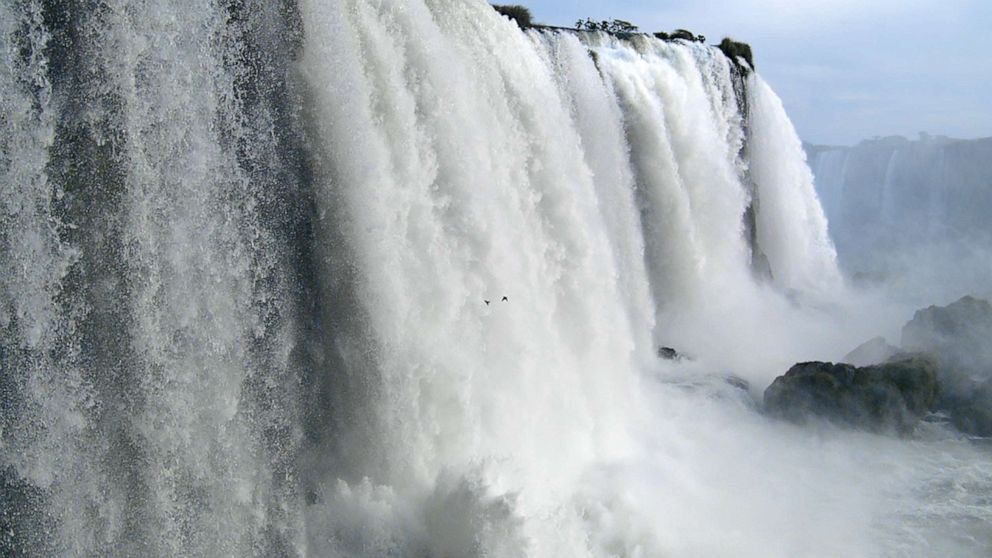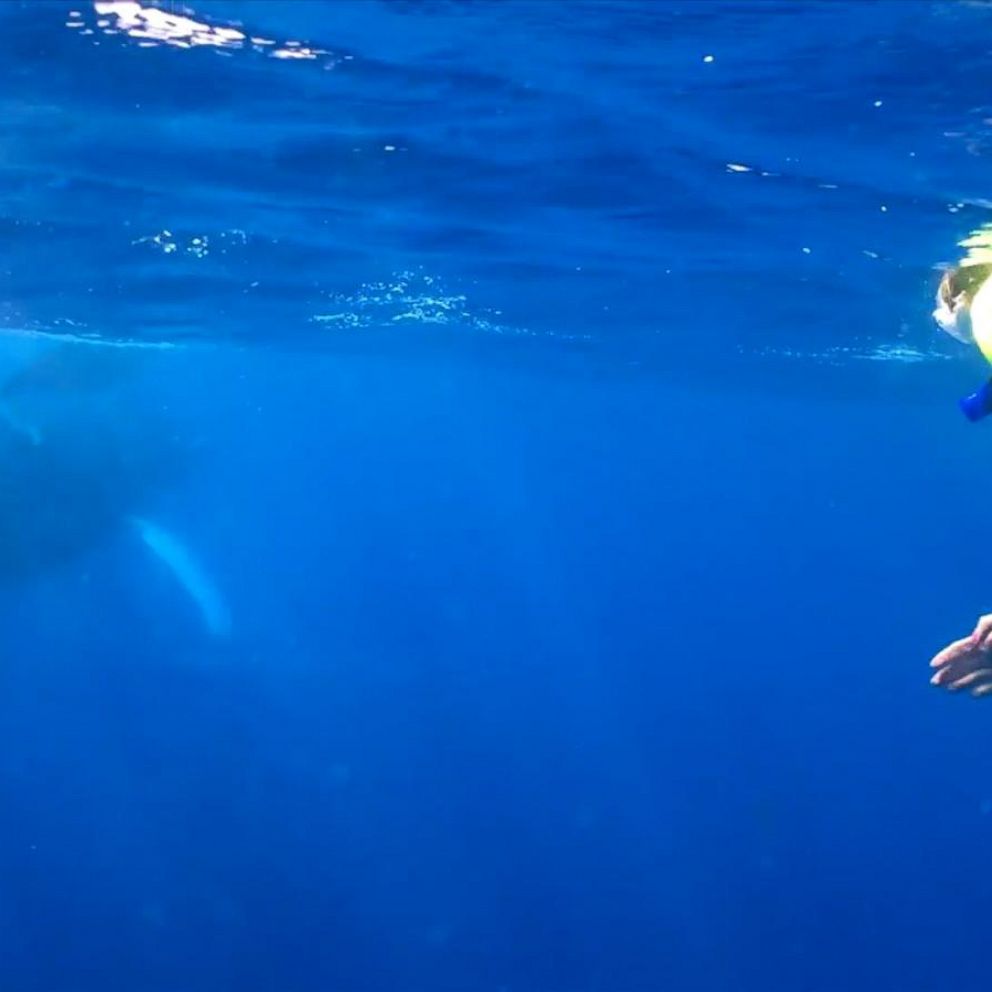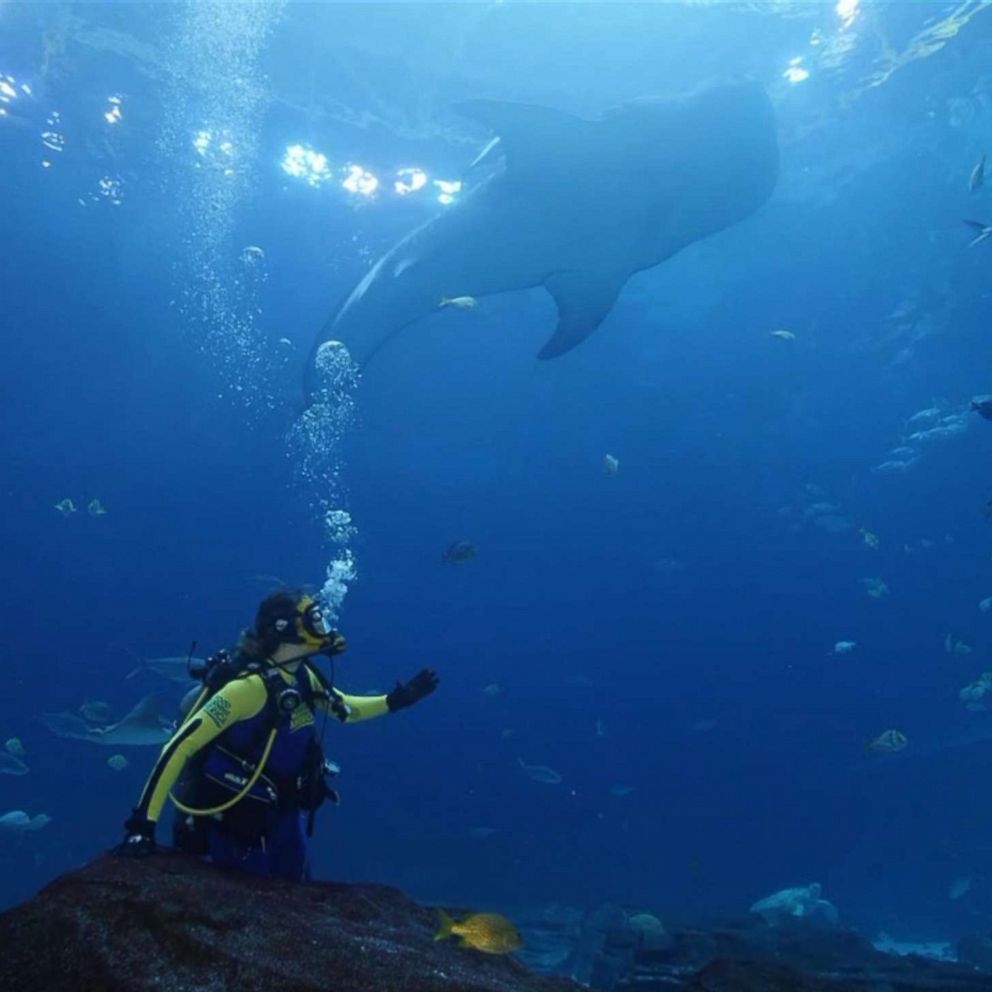Reporter's Notebook: Ginger Zee's 'GMA' adventure to Iguazú Falls, one of the world's largest waterfalls
Follow along as ABC News' Ginger Zee visits South America to see Iguazú Falls, one of the largest waterfalls in the world. Iguazú Falls is the subject of one of eight new episodes in a Netflix original documentary series, "Our Planet," which is a sponsor of "Good Morning America."
Read on as Zee takes you inside her adventure, in her own words.
Iguazú Falls, selected to be one of the New Seven Natural Wonders of the World in 2011, is a towering spectacle. The falls are fueled by the great Amazon rainforest, which consists of 275 separate falls. It's also home to human presence dating back at least 10,000 years, according to the Iguazú Falls National Park and the National Parks Administration of Argentina.
The story goes that when Eleanor Roosevelt approached the falls — she said “poor Niagara.” That’s how show-stopping Iguazú Falls are.
But beyond their majesty is the real story — a celebration of vital fresh water and the tale of one of the most threatened rainforests on the planet — that's the reason we went to Iguazú National Park.
These falls are encased in one of the most threatened rainforests on our planet— the Atlantic Forest — currently at only about 10 percent of what it was originally thanks to deforestation.
Why should you care? Well, each tree generates water vapor, that vapor rises into clouds and makes something you’ve heard me talk about before - an atmospheric river, that drives our weather patterns. If we lose more of this and the Amazon upstream — we don’t just lose water to the falls - we lose oxygen. We lose habitats for all those unique species that live around the falls. We lose a part of our delightfully balanced planet.
They tell me the falls are even more powerful today. On average you get 1,700 millimeters of water per second — an incredible force. And now you get to see all of that hit me in one fell swoop.

Friday, April 5, 9:30 a.m. EDT
WE DID IT! Just wow! Going into the falls is beyond he surface thrill ride — we spent three days learning about them, connecting to the story of their place on our planet and the feeling I got once I was past the screaming, the overwhelming power — was the deep connection I felt with our earth. An even greater respect for the beauty of the fresh water our lives depend on!
Thursday, April 4, 5:58 p.m. EDT
Today we saw even more of Iguazú Falls from every angle. You can access almost everything by walking the footbridges and paths - we saw a glorious rainbow form over one of the falls.
But beyond that rainbow was a boat and I knew we were going on that boat to get soaked by the falls later in the day.
I also knew that beyond those falls was a team of two dozen people that were preparing to have us live from the waterfalls on a boat in Argentina on Friday morning. It’s an incredible feat every time I go on an adventure but this one posed even more challenges.
Maria Stefanopoulos leading the charge as she had for almost every great adventure I’ve been on. Cameras had to be mounted and waterproof visual and audio equipment for the live shot, there’s a backup camera with a 40-zoom lens that will be onshore, and the most spectacular images from our talented drone team.
It’s wild to think what goes into bringing you a segment on "GMA," but also worth it once you know what we will be highlighting.
Early this morning I met up with Mandi Stark, one of the filmmakers for "Our Planet." We took a ride through the rainforest and talked about the integral part this forest plays to the galls and the globe.
Our guide told us we were riding through the "Atlantic forest" — one of the most threatened rainforests on the planet. Only 8-12% of the original is still around thanks to deforestation. It is rich in biodiversity of species and needs to be protected much like the Amazon to the northwest, because that’s where the water from the falls comes from. Each tree gives off water vapor that rises to form clouds which form rivers of their own — atmospheric rivers. Incredibly powerful and transporting fresh water around our planet. The trees in the forest also provide oxygen and home to the fragile ecosystem that still exists, albeit compacted.
I learned as we passed under giant spiders that we would see the coati (which we had seen plenty of), tapir, monkeys and possibly even puma and jaguar.
So exciting to know we at least have a chance at preserving what is left of this beautiful forest.
Then we arrived at a long set of stairs that brought us down to the boat dock where we were brought through a turbulent river to the mouth of the falls. When you are that close you can feel the energy of the rushing water, hear the roar all before getting dunked and then the boat revs and you realize you are going straight in.
Thursday, April 4, 12:03 p.m. EDT
Chasing rainbows and excited to bring you the critical information about our planet’s fresh water, as we learn more about the role the rainforest surrounding these falls plays in our lives.
Thursday, April 4, 9:10 a.m. EDT
Out exploring Iguazú National Park this morning with "Our Planet" Producer Mandi Stark! We're talking about what fuels these falls. Can't wait for you to see our chat tomorrow on "GMA"!
Wednesday, April 3, 10:26 a.m. EDT
Facebook Live time! Gave everyone a preview of all that's to come this Friday on "GMA." We found some new furry friends along the way too!
Keep asking me questions in the comments, I'll be checking back to answer you guys!
Wednesday, April 3, 7:43 a.m. EDT
I'm here at "Devil's Throat" aka "Garganta Del Diablo" -- can't wait to show you this incredible sight. SO impressive! The views here -- it doesn't seem real.
Tuesday, April 2, 1:52 p.m. EDT
Now arriving: Igauzú! We're here! And there's some interesting signage posted around our hotel...
Tuesday, April 2, 7 a.m. EDT
Good Morning... Argentina!
We're just about to our destination. While "GMA" is just getting just getting on the air back home, I couldn't help but to think, Wow, Iguazú is grand in the purest sense of the word but it also plays a critical role on our planet.
This is one of the parts of our planet that not only needs to be conserved for the animals and indigenous people but keeping the rainforest protected preserves the critical water source and the fine balance between our atmosphere and land.
I can't wait to see one of the great wonders of our world in Iguazú and share them with you! New pics to come as my team and I settle into our new home and begin our incredible adventure for Friday live on "GMA"! Stay tuned!
Monday, April 1, 2019, 8:51 p.m. EDT
Iguazú Falls, from everything I have read and seen, will be the most majestic sight I've ever encountered. And thanks to "GMA" and my adventurous spirit, that's saying a lot! I have traveled to Vietnam to see the world's largest cave, Son Doong, and flown a drone into a volcano in Iceland.
Iguauzú is a bit more well traveled than those other spots, playing host to around a million visitors each year, but it also plays a critical role on our planet.
Fresh water has not only been augmented horrifically by humans, but in this part of South America, most of that water at Iguazú has its origin in the Amazon rainforest. Each tree gives off water vapor, that vapor condenses to become clouds. The clouds travel across the continent fueling the wetlands, rivers and eventually the falls. The more the rainforest is depleted, the less fuel there is for the falls.
'Iguazú Falls, from everything I have read and seen, will be the most majestic sight I've ever encountered.'
Monday, April 1, 2019, 4:34 p.m. EDT
Off we go! Iguazú-bound by way of Atlanta and then Buenos Aires! So excited!
"Our Planet" on "GMA" is sponsored by Netflix.






